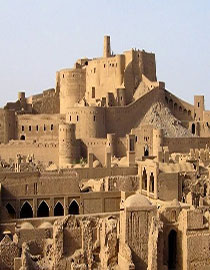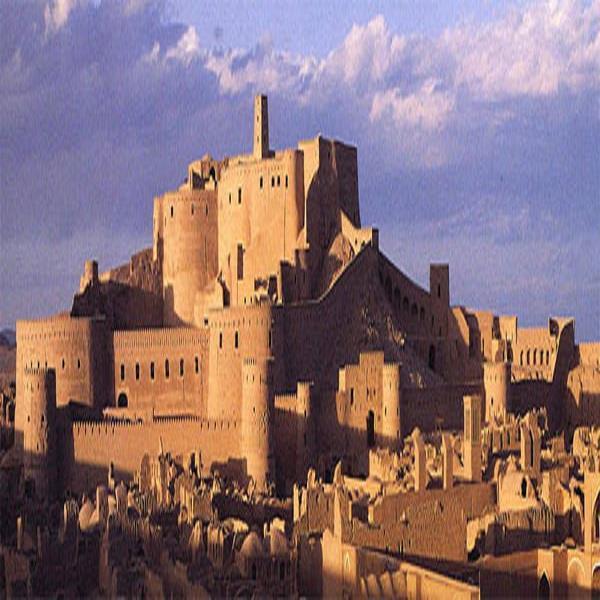Bam city
A city is situated in a desert environment on the southern edge of the Iranian plateau. This is one of the big cities in Kerman province that is called Bam city. The origins of this city can be traced back to the Achaemenid period (6th to 4th centuries BC). It is the only Iranian city to be registered as a UNESCO World Heritage Site.
Its heyday was from the 7th to 11th centuries, being at the crossroads of important trade routes and known for the production of silk and cotton garments. The existence of life in the oasis was based on the underground irrigation canals, the qanats, of which the city has preserved some of the earliest evidence in Iran. Arg of this ancient city is the most representative example of a fortified medieval town built in vernacular technique using mud layers (Chineh ).

History
This ancient city, which was inhabited until mid 19th century, is overlooking that route of trade and invasion, which the Sassanian Kings had already wished to control. Subsequently the Arabs extended their sway over it, only to be superseded by the Seljuk Turks in the 11th century. Finally the citadel of this city was captured by devastating Ghalzai Afghan invaders in 1722.
They were driven out in 1729, after their power had been shattered by Nader Shah Afshar. Bam city was the scene of the final stand of the gallant Lutf Ali Khan in 1795, the last of the enlightened Zand dynasty, against Agha Mohammad Khan, the first of the Qajar rulers of Iran. Some forty-five years later, the Agha Khan Mahallati, the head of the Ismaili Sect and a lineal descendant of the last Grand Master of the order of the Assassins, revolted against Fath Ali Shah. On being defeated at Kerman, he and his followers took refuge in Bam, whence they subsequently fled to India; the present Agha Khan is a direct descent of him. Total abandonment of the city seems to be, however, of a recent date. Otherwise its ruins should have been in a much more dilapidating condition.
About weather
The city has arid climate and due to its proximity to deserts experiences extreme climate variations as a result of which Bam sometimes has the hottest summers and coldest winters in the country.
Souvenirs of Bam
Iran is one of the main producers of dates in the world and produces over 400 different types of dates, 15 of which are known in international markets. One of these 15 date varieties is the Mazafati, a soft black date, which is exclusively produced in this ancient city.
Attraction of Bam city
The Arg-e Bam was the largest adobe building in the world, located in this city in Kerman Province of southeastern Iran. The citadel is listed by UNESCO as part of the World Heritage Site “the city and its Cultural Landscape”. The citadel in fact is a huge fortress located in the center of the citadel. The materials used in its construction consist mainly of adobe, malate, bole and straw, and in rare cases part of stone, bricks and trunk of palm trees. Perhaps because of the huge building of the citadel, which is also considered to be the highest part of the complex, they have named all this monument to the citadel. The most important points about the architecture and construction of this brick-and-concrete structure are two parts of this huge collection: Government sector and peasantry sector, with their own unique characteristics.
About earthquake
Unfortunately, after a powerful earthquake that occurred on December 26, 2003 in the city, more than 80 percent of the citadel has been destroyed. Many countries, including Japan, Italy, and France, were among the countries that collaborated with Iran since the restoration operation of this impressive citadel had begun. One might blame the ancient earthen structures for not being earthquake resistant but actually, the newly restored buildings in the citadel suffered more destructions than those that had not been restored.
